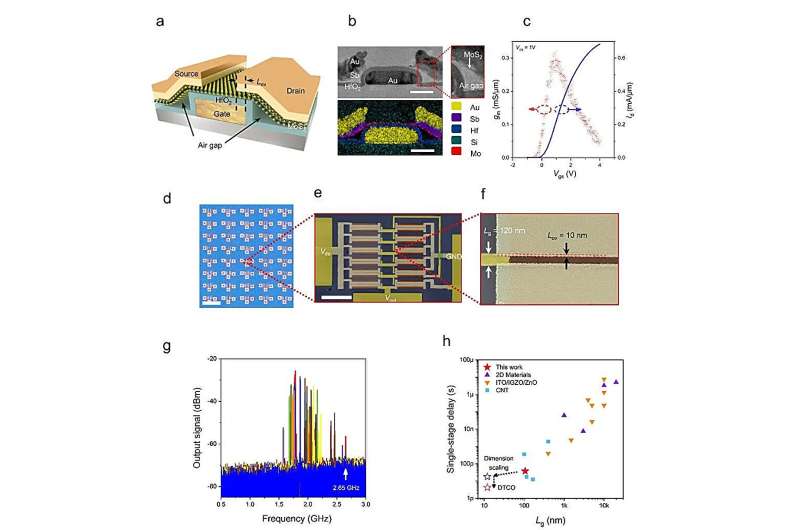Our air-gap structure can potentially be scaled to the 1 nm technology node and could reach the targets set out in the IEEE International Roadmap for Devices and Systems for 2031.~ Researchers
Researchers at Nanjing University in China have developed new integrated circuits (ICs), five-stage ring oscillators, capable of operating at GHz frequencies. These ICs use the two-dimensional semiconducting material monolayer molybdenum disulfide (MoS2).
Transition metal dichalcogenides (TMDs), which are two-dimensional materials, have the potential to create transistors that surpass the scaling limitations of silicon-based devices. However, developing high-frequency integrated circuits using TMDs has been challenging. To date, the operating frequency of TMD-based integrated circuits has been confined to the megahertz range, lagging behind silicon complementary metal oxide semiconductor (CMOS) technology and other emerging technologies like carbon nanotubes.

These devices are built upon MoS2-based field-effect transistors (FETs) and can achieve frequencies up to 2.65 GHz. This advancement was made possible through a design-technology co-optimization process. The circuits utilize monolayer molybdenum disulfide field-effect transistors with an innovative air-gap structure. This structure enables doping-free ohmic contacts and reduces parasitic capacitance, contributing to the enhanced performance.
Technology computer-aided design (TCAD) simulations indicate that the air-gap structure could be scaled down to the 1 nm technology node. This scaling potential aligns with the targets outlined in the IEEE International roadmap for devices and systems for 2031, suggesting that these TMD-based circuits could play a significant role in future semiconductor technologies.
Hao Qiu, a co-author of the study, commented that since the initial report of the MoS2 transistor in 2012, there has been considerable progress. He noted, however, that most advancements have been at the device level. On the circuit level, operational frequencies were confined to 13 MHz, significantly lower than those achieved with CMOS and carbon nanotube technologies.








